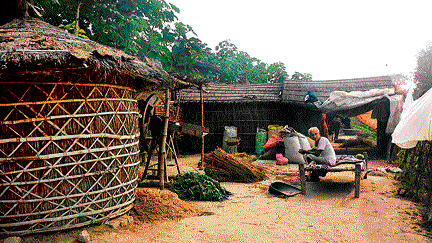
As India enters the last stage of eliminating the scourge of Kala-azar from the country, red flags are being raised on using DDT without adequate surveillance because of which the sand flies that spread the disease become resistant to the insecticide.
The official prevention tactics involves spraying walls of houses and cattle sheds with DDT (Dichloro Diphenyl Trichloro Ethane) for killing the vectors. But checks carried out in eight districts of Bihar last year showed 85 per cent of the walls received significantly less quantity of DDT, because of which the flies thrive.
A little more than 7 per cent of the walls receive the right amount of DDT, whereas almost an equal number of walls receive the insecticide in excess. As a result, the spraying in 2014 was not as effective as the exercises carried out between 1977-79 and 1992-95, when the number of Kala-azar cases declined sharply.
“This is probably due to the increased level of insecticide resistance. It would be better to switch (to another insecticide). Sandflies are extremely susceptible to pyrethroids, which are already used for malaria control in India and these are more likely to give better results than DDT,” Janet Hemingway, a scientist at the Liverpool School of Tropical Medicine, told Deccan Herald.
Hemingway inspected the Kala-azar elimination programmes in eight Bihar districts — Begusarai, Gopalganj, Khagaria, Paschim Champaran, Patna, Purbi Champaran, Saharsa, and Samastipur — along with colleagues from Rajendra Memorial Research Institute of Medical Sciences, Patna.
Restricted spread
Though it is a century old disease in India that affected the labour force in the tea gardens in a big way in the early part of the last century, Kala-azar is mainly restricted to Bihar, Jharkhand and West Bengal, where it infected 9,241 persons in 2014 out of which 11 died. Till April 2015, the disease affected almost 2,900 people and two died.
The Union health ministry’s elimination plan is to reduce the annual incidence of disease to less than per 10,000 population at the block level.
“However, in India, widespread resistance to DDT, combined with poor quality assurance of the spraying programme and limited surveillance, is hindering the elimination effort.
Unless these issues are addressed, the South Asian Kala-azar (visceral leishmaniasis) elimination effort will fail,” the Indo-British team reported in the “Proceedings of the National Academy of Sciences”.
“We have already decided to change DDT with synthetic pyrethroids. The spraying will start in the second round of spraying that would begin in July,” commented A C Dhariwal, who heads the national vector borne disease control programme and not associated with the study. DDT is banned in India for all use barring disease control.
Deccan Herald is on WhatsApp Channels| Join now for Breaking News & Editor's Picks
